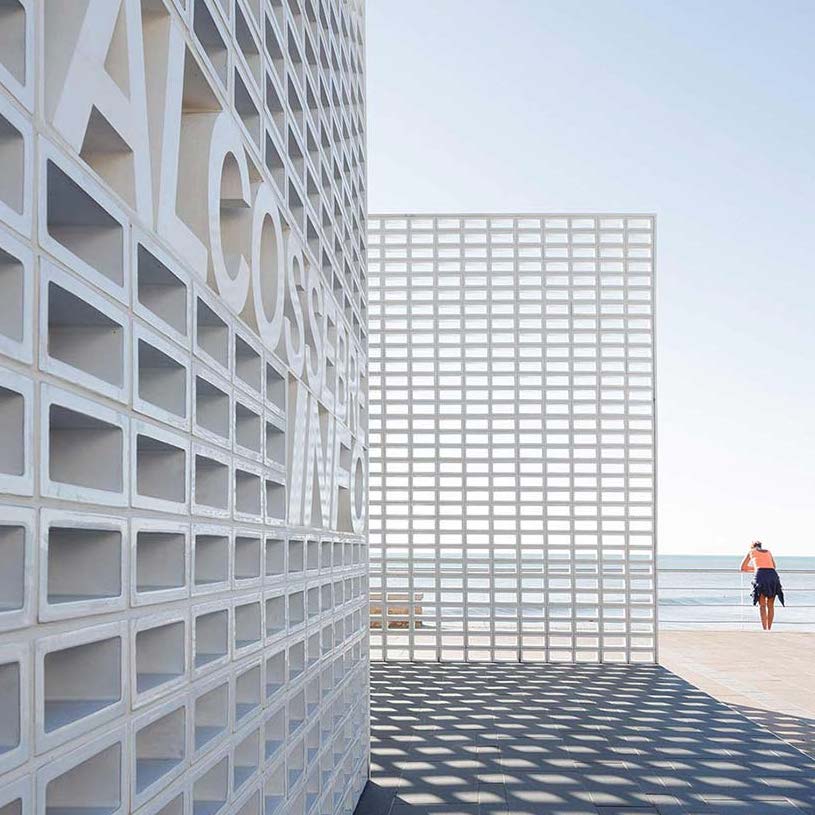ALCOSSEBRE, Spain — Founded in Castellon in the late-1980’s, Sanahuja & Partners says that their architecture studio exploits natural light, with a focus on simplicity and clarity, which they say are key values of the Mediterranean culture.
Their award winning work in Alcossebre, Spain has the most clinically sterile title we’ve encountered recently, although the work on display is anything but. Their “Strategic Plan for Tourism Development” incorporated three different types of contemporary ceramics into their overhaul of Alcossebre’s tourism center. Porcelain pavement (!), a glazed ceramic lattice for the tourism building and a ceramic facade surrounding that same building all made an appearance. Partnered with the Polytechnic University of Valencia, the city hopes to promote tourism in the area through small urban, architectural and design activities.
The ceramic elements come in different thicknesses, formats, colors and finishes. One material even purifies the air, a technology we’ve covered before on the site. The studio describes their use:
A technical porcelain pavement was used for the Paseo Vista Alegre promenade. The multiple combinations of sizes and finishes provide infinite possibilities, thereby generating a new urban fabric on the pavement.
The project’s tourist office is inspired by the Mediterranean lattice, used in many of the seafront buildings from the 60s and 70s. A white glazed ceramic lattice was placed, forming three semi-transparent walls of different lengths around the building, to give it more presence. These lattice walls filter the light, the views and the breeze, improving thermal and lighting comfort and offering a new urban landscape.
The third ceramic element was used to create an airy façade, like a second skin enveloping the tourist office, to improve its living conditions, and solve the aesthetic problems posed by current enclosures. This façade also purifies the air by removing NOx.
The project is a 2016 prizewinner for the Porcelanosa IX Architecture and Interior Design Awards.
Do you love or loathe this use of contemporary ceramics? Let us know in the comments.







Add your valued opinion to this post.